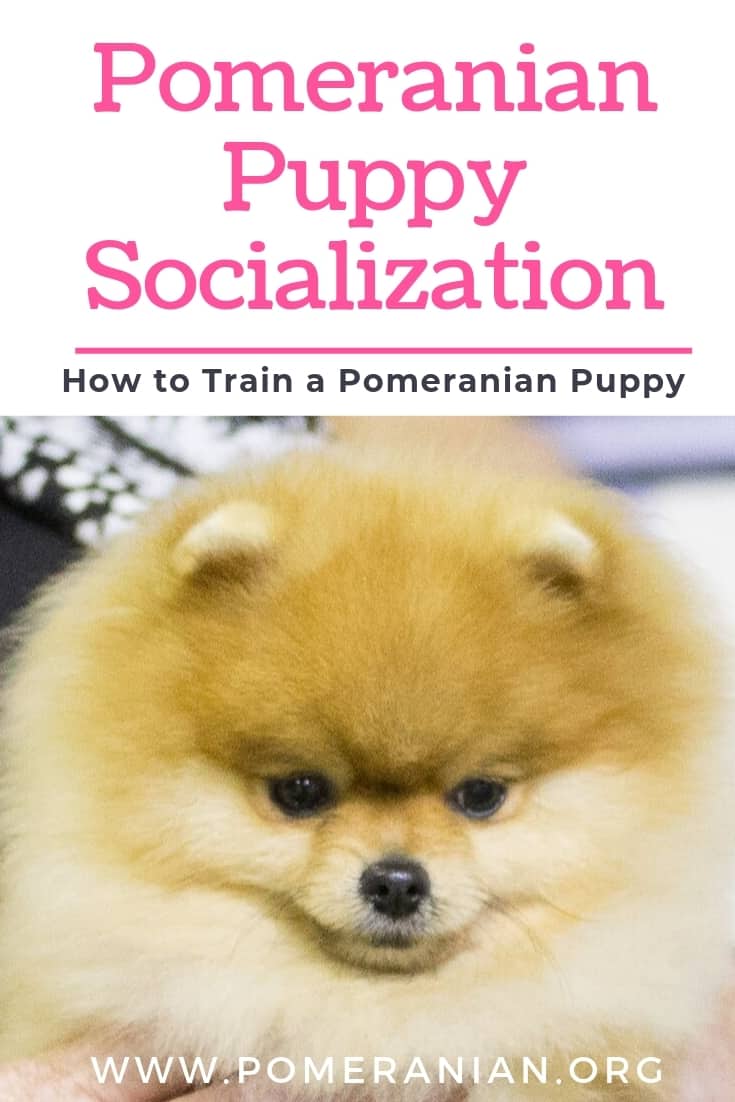Last Updated on 24/04/2024 by Dochlaggie. Post first published on September 9, 2023.
Get your puppy off to the best start and ensure a well-adjusted canine with our comprehensive socialization checklist. Learn practical tips from Pomeranian Headquarters today!
Puppy socialization is a crucial aspect of raising a well-adjusted and well-behaved dog. It is a process that helps your young pup become comfortable with various people, animals, environments, and experiences, setting them up to navigate the world as they grow confidently.
The most critical socialization window occurs before the age of 12 weeks, making it essential for new pet owners to have a checklist to ensure they cover all necessary aspects during this period.
Understanding the importance of socialization is one of the first steps in building a strong foundation for a happy and healthy dog. Exposing your puppy to different environments, people, sounds, and experiences can help them become more adaptable and well-rounded.
Creating positive experiences is key to developing trust and confidence, helping prevent behavioral issues. With a proper socialization checklist and guidance, you can actively participate in your puppy’s development, ensuring it grows into a well-mannered and well-adjusted companion.
Key Takeaways
- Early socialization is crucial for raising a well-rounded and confident dog.
- Exposure to various people, environments, and experiences helps prevent future behavioral issues.
- Creating positive experiences during socialization builds trust and confidence in your puppy.
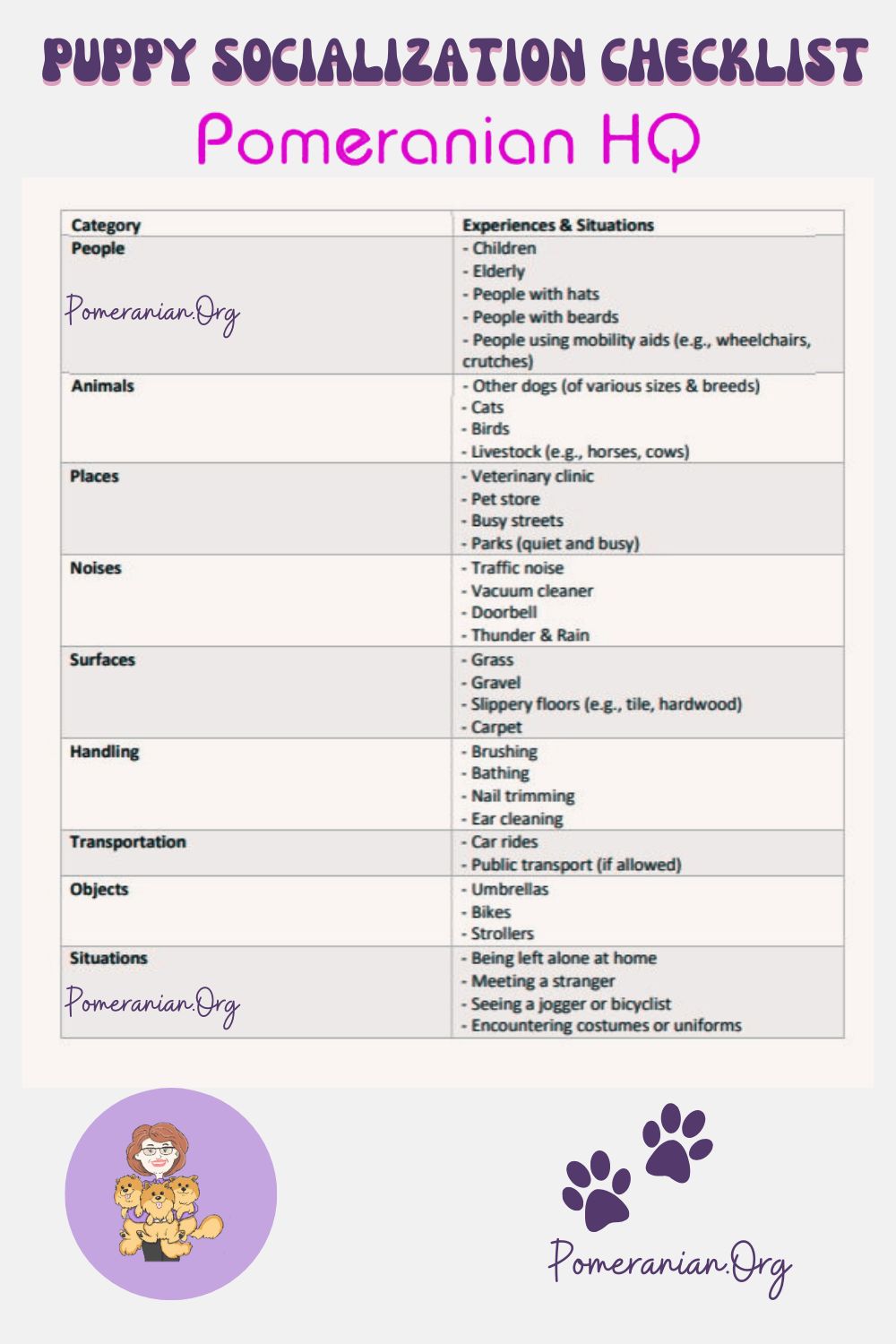
Puppy Socialization Checklist
| Age Range | Experience | Location/Notes | Completed (✓/X) |
|---|---|---|---|
| 8-10 weeks | Exposure to different household sounds | Home (e.g., vacuum, washing machine) | |
| Meeting family members | Home | ||
| Socialize with a variety of dogs. | Home/play area | ||
| Introduction to the car | Short rides | ||
| 10-12 weeks | Walks in quiet outdoor settings | Parks during off-peak hours | |
| Introduction to friendly, vaccinated dogs | Supervised playdates | ||
| Exposure to different terrains | Grass, gravel, pavement | ||
| Exposure to water | Shallow paddling pools | ||
| 12-16 weeks | Introduction to more people | Quiet public spaces, friend’s homes | |
| Experience with gentle children | Supervised interactions | ||
| Visit to the vet. | Regular checkup | ||
| Exposure to urban sounds | Streets with moderate traffic, public parks | ||
| 4-6 months | Basic obedience training | Training classes or home | |
| Introduction to other animals | Cats, rabbits, etc. | ||
| Exposure to crowded places | Pet-friendly events, busy parks | ||
| Experience with grooming | Bath, brush, nail trimming | ||
| 6-9 months | Advanced obedience training | Training classes or home | |
| Exposure to more complex environments | Shopping centers, busy streets | ||
| Socialize with a variety of dogs | Dog parks, playdates | ||
| 9-12 months | Reinforce earlier exposures | Revisit past experiences to ensure comfort | |
| Exposure to different weather conditions | Rain, snow, summer heat | ||
| Overnight experience outside the home | Pet sitter’s home, boarding facility |
Note: The above checklist is a general guide. The list may need adjustments depending on the breed, individual dog temperament, and owner’s circumstances. Always prioritize your puppy’s safety and comfort.
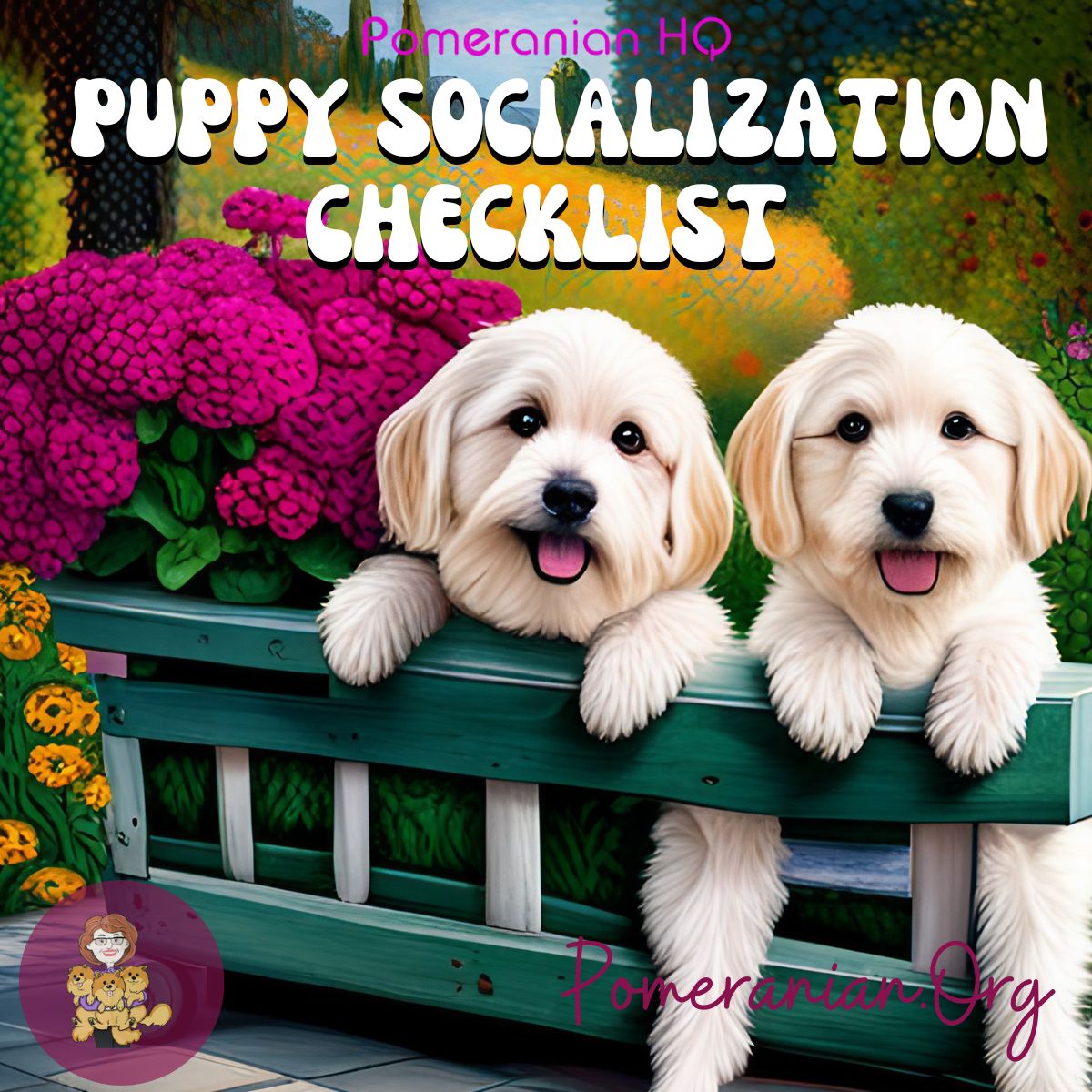
Understanding Puppy Socialization
If you want to raise a happy and well-behaved dog, proper puppy socialization is one of the key factors. I’ve learned that this process involves exposing puppies to different people, places, sights, and sounds during their early life, which helps them develop confidence and positive associations with the world around them.
The American Veterinary Society stresses the significance of socialization during the “socialization window.” It is crucial for the well-being of our furry friends. This critical puppy socialization window starts at three weeks and typically lasts until the puppy is 14-16 weeks old. During this time, it is crucial to introduce them to various experiences, as this lays the foundation for their lifelong behavior.
With my experience as a canine behaviorist, I often recommend the following steps for successful puppy socialization:
- Expose your puppy to various environments: Take your puppy to different locations, like parks, busy streets, or pet-friendly stores. This guides them in understanding that not all environments are the same and helps them cope.
- Encourage interactions with diverse people: Allow your puppy to meet various individuals – adults, children, elderly, people wearing uniforms, et cetera. This will help them learn to accept and feel comfortable around all people.
- Introduce different textures and surfaces: Walk your puppy on various surfaces, such as grass, concrete, carpet, or sand. This exposure improves physical coordination and adaptability to different ground under their paws.
- Meet other dogs and animals: Arrange safe and positive encounters with other dogs from an early age to instill polite and appropriate behavior around their canine peers.
To successfully train your puppy, consistently reward them with treats and praise whenever they demonstrate positive behavior.
Moreover, it is recommended to enroll in well-structured puppy classes, which provide a controlled environment for socialization. This way, your puppy can learn to interact with other puppies and people under the guidance of a professional trainer.
Understanding and following these guidelines for puppy socialization is essential to help them grow into confident, well-adjusted dogs that are comfortable in their surroundings and with those they encounter.
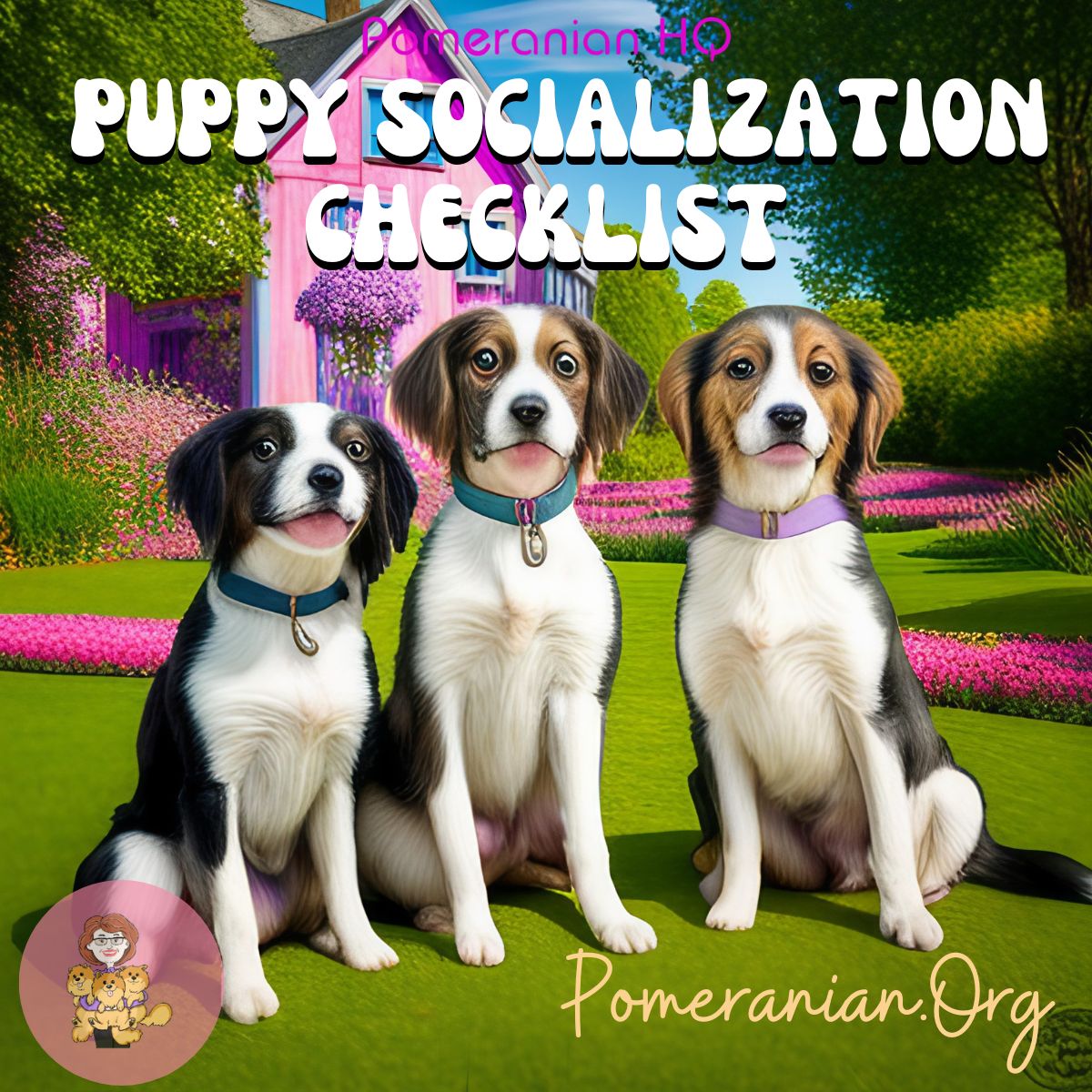
Why Socialization is Important
When raising a well-adjusted and happy dog, I cannot emphasize enough the importance of socialization. As a dog owner, I must ensure that my puppy learns how to appropriately interact with its environment, other animals, and people.
One of the main benefits of proper socialization is preventing behavioral problems. When puppies aren’t exposed to various situations, they may develop aggression, anxiety, fear, and stress as they age. Ensuring my puppy experiences diverse and positive encounters helps build a solid foundation for their emotional well-being.
It’s crucial to start socialization early in a puppy’s life. During the critical period of 5 to 16 weeks, my puppy’s experiences shape their future behavior. Both positive and negative encounters during this time can have a lasting impact.
Starting socialization at this stage helps build an emotionally resilient dog capable of confidently handling various environments and situations.
A dog that is well-socialized is less prone to aggression or biting problems. These behaviors often stem from fear and anxiety, so exposing my puppy to various experiences while maintaining a calm and supportive atmosphere allows them to be comfortable in different surroundings.
This also means that my dog will be more friendly, making it easier for them to form positive relationships with other animals and people.
In addition to overcoming anxiety and fear, proper socialization helps boost my dog’s confidence.
A confident dog can easily navigate new situations, reducing the likelihood of stress and ensuring a happier life for me and my pet.
Ensuring proper socialization for my puppy is crucial for their overall well-being.
My approach to training prevents behavior problems like aggression and biting and reduces anxiety and fear while promoting confidence and sociability.
Taking the time to socialize my puppy adequately will result in a well-adjusted and happy dog, making our lives more enjoyable.
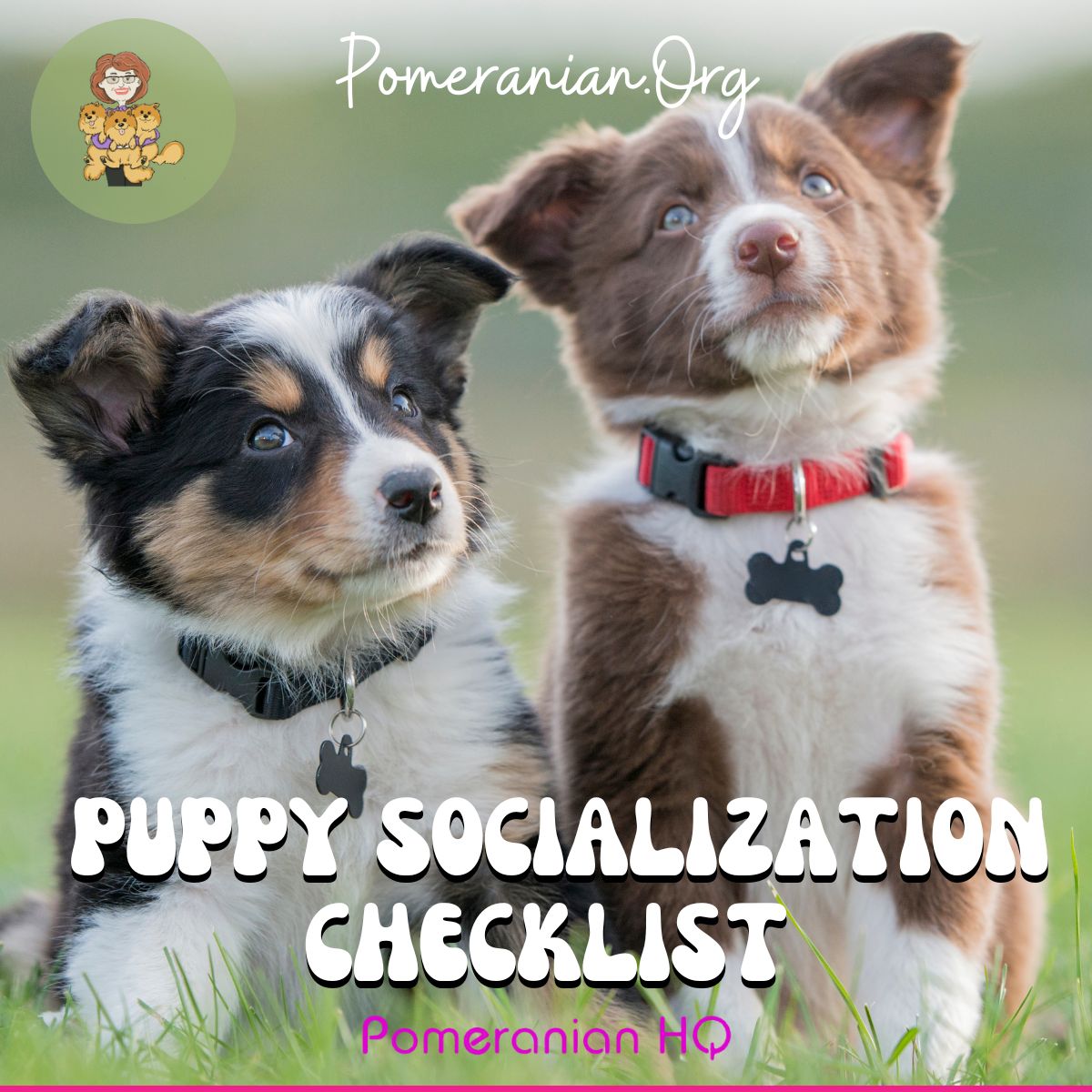
The Ideal Puppy Socialization Checklist
When it comes to puppy socialization, having a well-rounded and comprehensive checklist is crucial. Using this checklist will help guarantee that your puppy develops into a well-adjusted and social dog while minimizing the likelihood of future behavioral problems.
I recommend that the puppy socialization checklist covers various experiences, including different environments, people, animals, and sounds. The goal is to expose your puppy to as many new and diverse experiences as possible during its critical developmental period.
Firstly, I’d like to emphasize the importance of exposing your puppy to different environments. This can include a variety of surfaces such as sand, grates, cement, hardwood floors, carpet, and stairs. Make sure your puppy has the opportunity to explore different spaces, like friends’ homes, pet stores, hardware stores, and vet visits.
When socializing with people, the more diverse, the better. Ensure your puppy meets individuals of different ages, heights, and appearances. This will help them develop a neutral and accepting attitude towards all people.
Your puppy should also interact with other animals, not just other dogs. Introduce them to cats, birds, and even livestock if possible. This exposure to different animals will help them develop appropriate social behavior and build their confidence around various stimuli.
Lastly, exposing your puppy to various sounds is essential for healthy development. Some common noises to include in your socialization checklist are clapping, shouting, laughter, thunder, doorbells, knocking, and street noises. The more your puppy is accustomed to these sounds, the less likely they will develop noise-induced anxiety.
By creating and following a comprehensive puppy socialization checklist, I’m confident my puppy will grow into a well-adjusted, sociable, and happy dog.
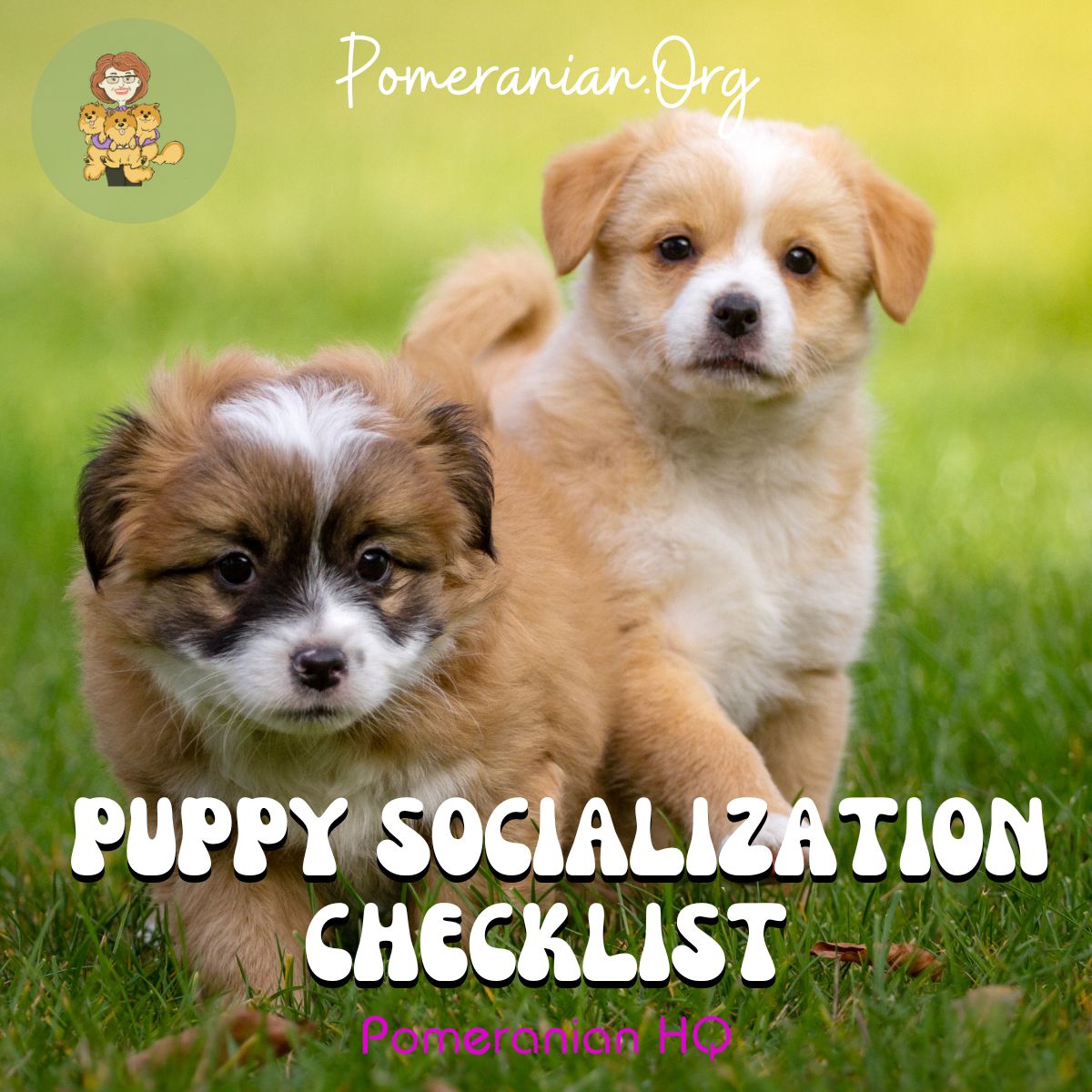
Creating Positive Experiences
During puppy socialization, I focus on creating positive associations in my puppy’s mind. I achieve this through positive experiences, praise, and rewards. This helps my puppy develop a confident and resilient attitude towards various environmental stimuli.
I prioritize exposing my puppy to various sights, sounds, and smells. In each new situation, I offer them treats, which aid in reinforcing positive associations. I must be patient, allowing my puppy to approach new experiences at their own pace.
I pay attention to my puppy’s body language and reactions, adjusting our interactions accordingly. If my puppy appears fearful or hesitant, I might use their favorite toy to create a more enjoyable experience, gradually increasing difficulty or intensity.
Verbal praise plays a significant role in creating positive experiences. I always provide an encouraging tone when praising my puppy, letting them know they are doing well. This helps build their confidence and associates new experiences with positivity.
By using positive associations, treats, and praise, I am actively working towards creating a well-socialized and confident dog. I ensure they’ll be a well-rounded and adaptable canine companion by exposing my puppy to diverse stimuli and making the process enjoyable.
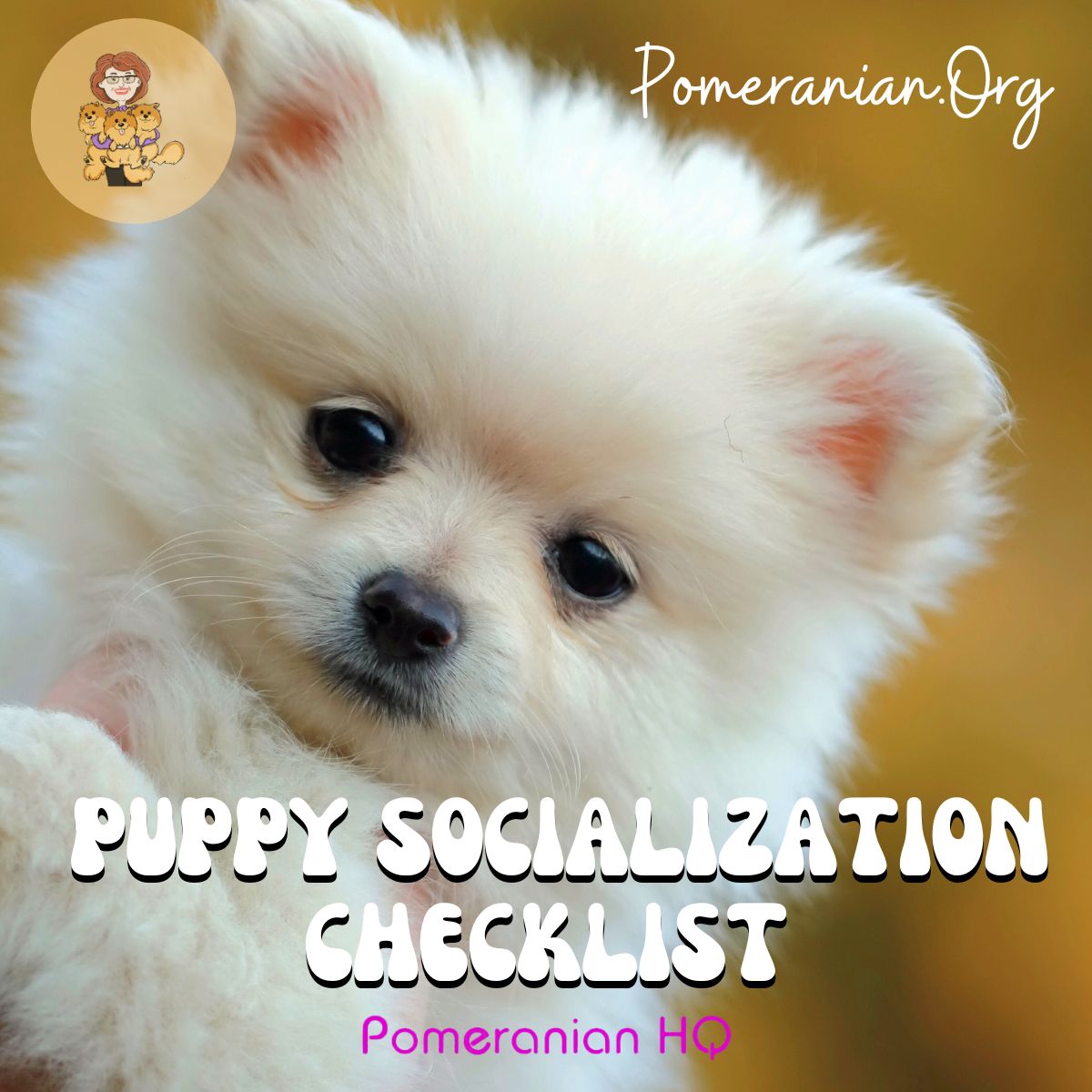
Introducing Different Environments and Surfaces
Exposing your puppy to various environments and surfaces is crucial when socializing them. It helps them become more comfortable and builds their body awareness.
I recommend introducing puppies to public parks, retail stores, and other public spaces. This allows them to encounter a variety of sights, sounds, and smells, which is crucial in their socialization process. Remember to follow your local rules and regulations regarding pet access in these areas.
As for surfaces, it’s essential to let your puppy experience different textures they might encounter daily. From smooth concrete floors to rocks or sand, having them stand and walk on these surfaces helps them become more adaptable.
Getting your puppy used to the feel of a bathtub under their paws can be particularly beneficial, as it can make bath time less stressful for you and your pet.
Moreover, it’s important to expose your puppy to new environments and surfaces slowly. Gradual introductions to various experiences help them become more confident and well-mannered dogs in the long run.
Always watch their body language and provide positive reinforcement as they navigate these new experiences.
Introducing your puppy to different environments and surfaces is crucial for their socialization. By doing so, you’re setting the stage for a well-adjusted dog ready to explore the world around them confidently.
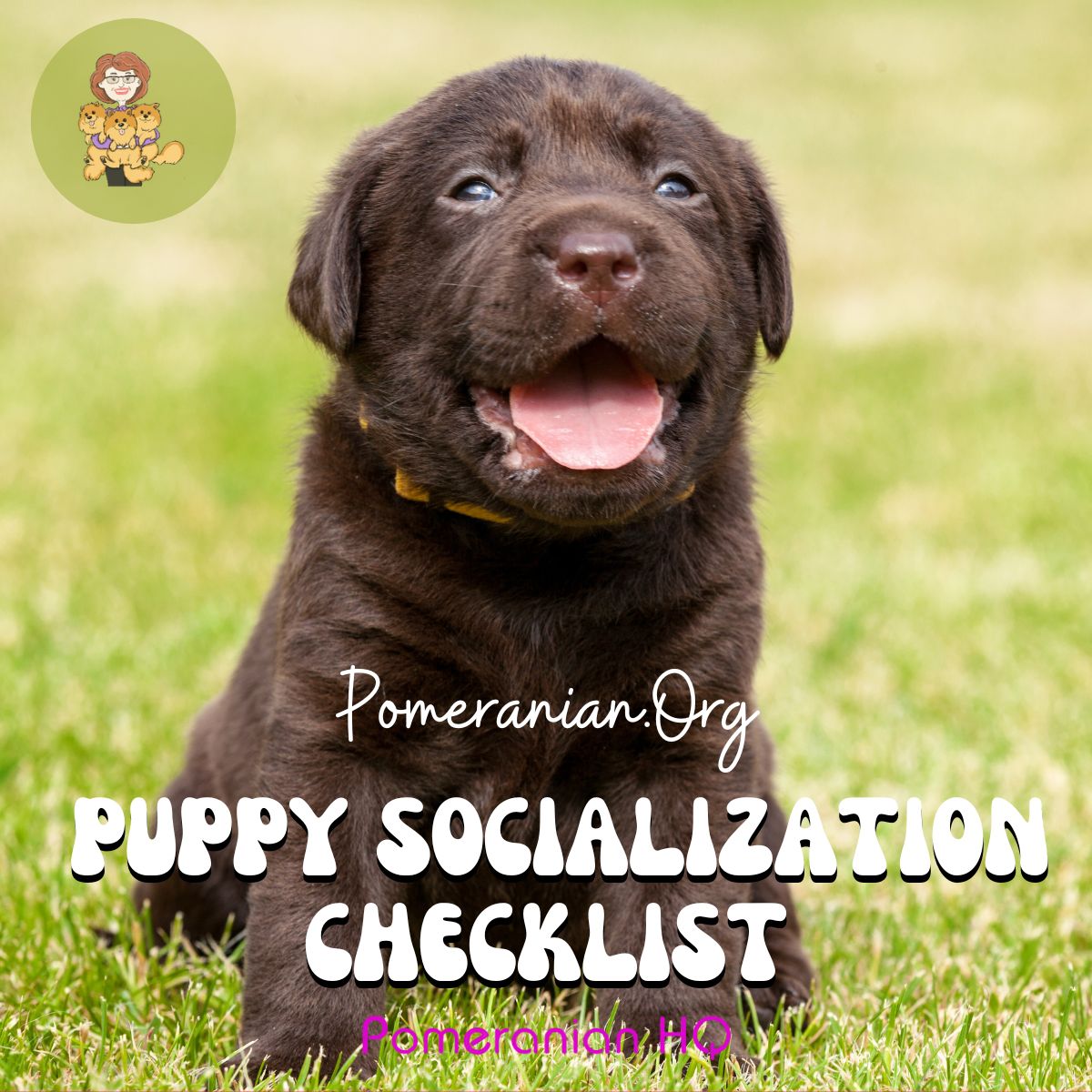
Socialization with People
As I begin socializing with my puppy, I must expose them to various people, including children, kids, new people, and strangers. In doing so, my puppy will grow up confident, knowledgeable, neutral, and clear around humans.
I’ll introduce my puppy to family members and friends in calm and controlled environments. This will help my puppy feel comfortable and create positive associations with different individuals. I will remember to include people who wear hats uniforms or use mobility aids, as these experiences can help my puppy become more adaptable to various situations.
Next, I plan to expose my puppy to children and kids. They need positive experiences with younger people as they tend to behave differently than adults. By carefully supervising interactions, allowing my puppy to approach the kids, and rewarding them for calm behavior, I will ensure a pleasant experience for both the puppy and the children involved.
Taking my puppy to pet-friendly locations will provide opportunities to encounter new people and strangers. During these outings, I will ensure that my puppy remains on a leash and monitor their body language closely.
If they appear stressed or overwhelmed, I will give them space and gradually work on increasing their comfort level in new situations.
Exposing my puppy to people of different ethnicities, ages, and appearances is crucial to fostering a well-rounded socialization process. By doing so, I am helping prevent any fear-induced behavioral issues my puppy might develop.
Patience and consistency are key; my puppy will blossom into a happy, well-adjusted canine citizen under my guidance.
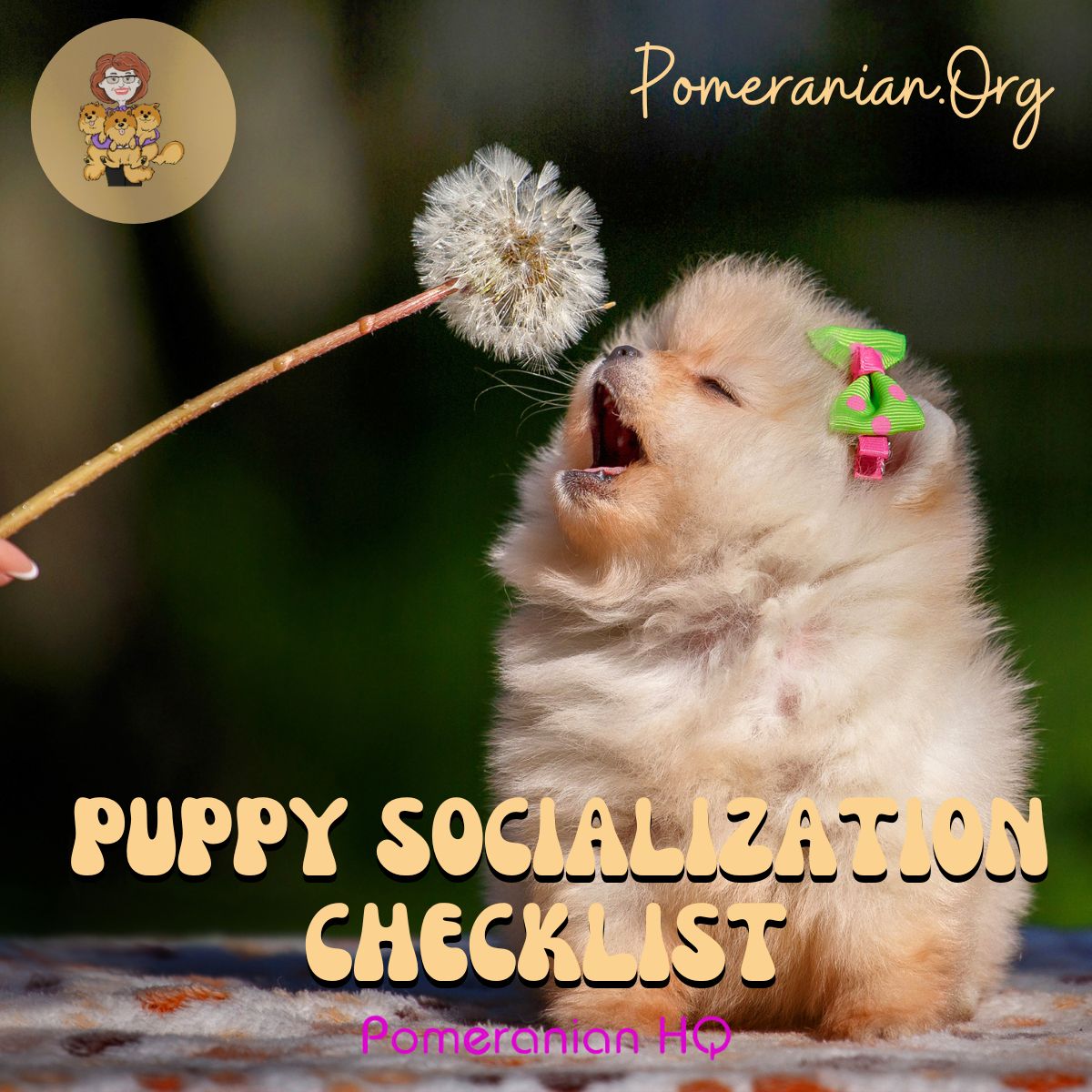
Socialization with Sounds
One crucial aspect of puppy socialization is exposing them to different sounds. I make sure to introduce my puppy to various noises in a controlled and positive manner. This helps them develop confidence and prevents fear-related behaviors as they grow up.
I expose my puppy to household sounds like vacuum cleaners, washing machines, and doorbells in the early stages. These noises can be scary for a young pup, so I start by playing them at a low volume and rewarding my puppy with treats for their calm reactions.
Exposing them to thunder is also important because it’s a common fear among dogs. I found it helpful to play recordings of thunderstorms to familiarize them with the sound gradually.
When they become comfortable with these noises, I eventually take them outside during an actual storm while providing lots of praise and reassurance.
One of the most significant aspects of sound socialization is getting them used to the sounds of people, including babies crying. I play recordings or invite friends with infants to meet my puppy so they become comfortable with these high-pitched sounds.
I ensure my pup is exposed to outdoor noises like traffic, construction sites, and barking dogs. Taking them on frequent walks or visits to the park allows them to experience these different sounds in a controlled manner.
I prioritize sound socialization as a critical part of my puppy’s early development. They become well-adjusted and confident adult dogs by exposing them to various noises with positive reinforcement.
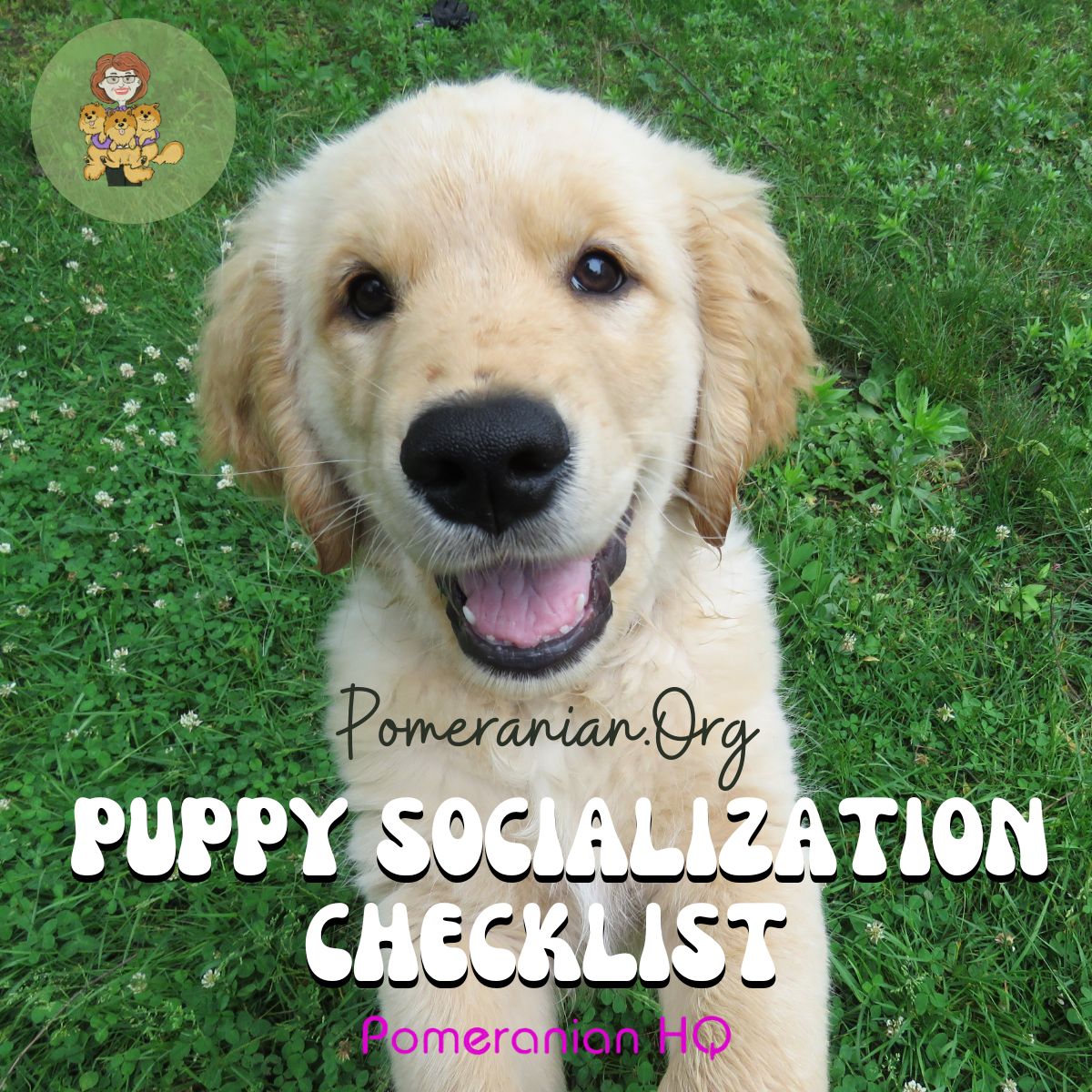
Socialization with Other Animals
When I socialize my puppy with other animals, I consider various factors. Exposing them to different animals, including adult dogs, cats, and other pets, is important. This ensures my puppy will grow into a well-rounded and confident adult dog.
I start by introducing my puppy to adult dogs. This allows them to learn proper behavior and boundaries, as adult dogs often correct inappropriate behaviors in puppies. I make sure these interactions are supervised and take place in a controlled environment so my puppy feels safe and positive experiences are encouraged.
Moving on to other animals, I aim for my puppy to interact with cats and pets they may frequently encounter. This helps my puppy understand that not all animals are the same and teaches them to respect the boundaries of other species. When introducing my puppy to cats, I make sure both animals are calm and have an option to retreat if they feel uncomfortable.
It’s also essential to expose my puppy to various pets, such as birds, rabbits, and rodents, which helps them learn to differentiate between multiple species and their unique behaviors.
To ensure my puppy’s well-being, I carefully observe their body language to identify any indications of stress or fear. If they display any anxiety symptoms, I end the interaction and try again another time, ensuring a positive experience for my puppy.
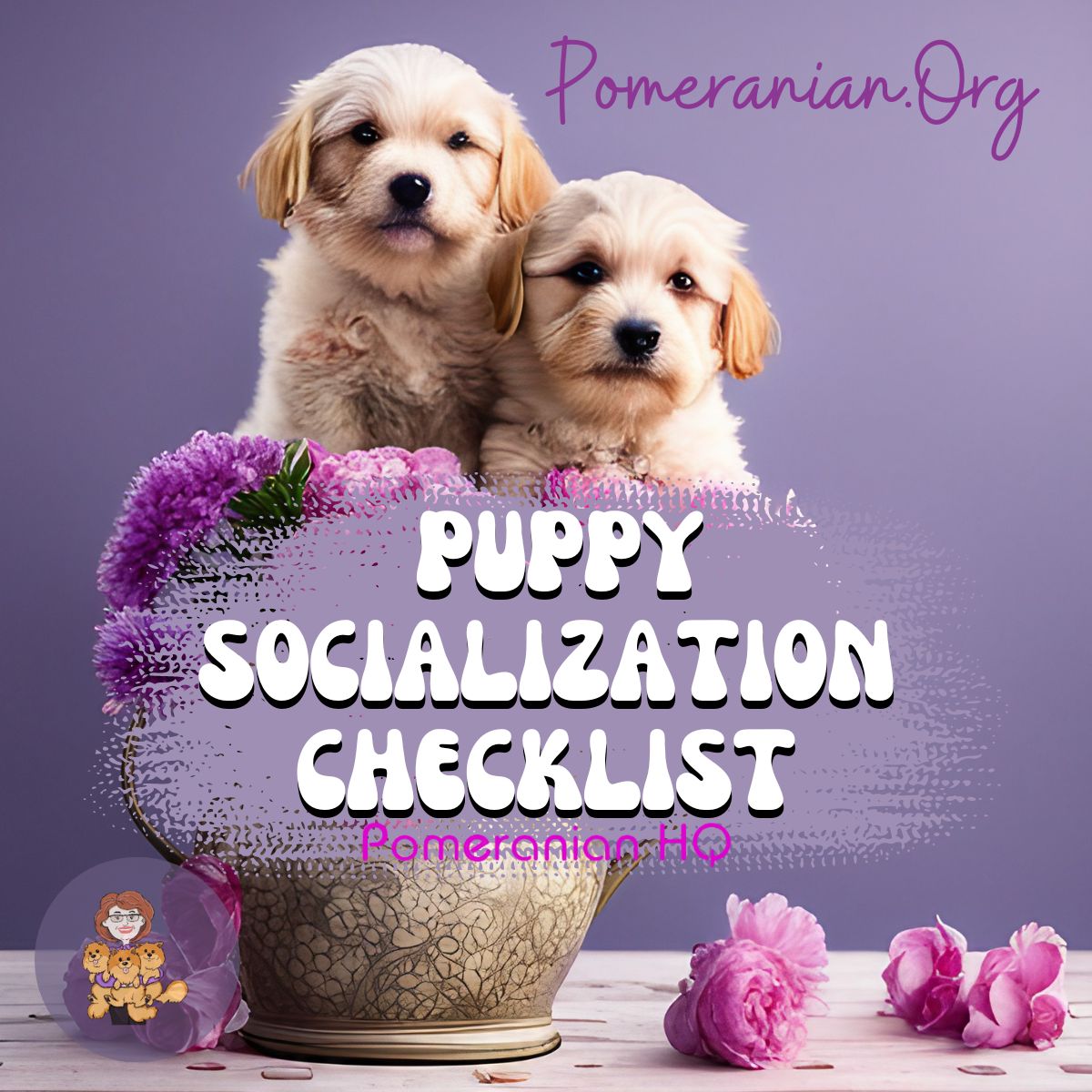
Exposing to Different Objects and Smells
Regarding scents, it’s crucial to introduce your puppy to different smells. Dogs heavily depend on their sense of smell, which is essential to their development.
I allowed them to sniff at a wide range of items, from food to fabrics, in a safe and supervised manner. For instance, I brought them to several environments, such as the park and friends’ houses, giving them access to many scents.
For my puppy to adapt to new things, I continuously introduced them to diverse experiences, varying from various floor textures like tiles and carpets to the weather, such as rain and snow. This way, they learned to adapt and became more resilient individuals.
With the help of resources like the Puppy Socialization Exposure Checklist, I ensured that my puppy had a healthy and well-rounded upbringing. By exposing my puppy to different objects, smells, and new experiences, I contributed to creating a more confident and adaptable adult dog.
Remember to monitor your puppy’s reactions during these exposures to ensure they don’t have an overly negative or fearful response. The key to a positive experience is patience, consistency, and a gradual approach to introducing new elements into their life.
Getting Used to Handling and Body Language
As a responsible pet owner, I understand the importance of helping my puppy get used to handling and learning to read their body language for effective communication.
Here are a few insights to guide any new pet owner through this process.
First, it is essential to begin handling exercises like petting and gently touching the puppy’s paws, tail, and ears to familiarize them with human contact.
I do this several times a day for short periods to ensure my puppy becomes comfortable with being touched. Well-structured puppy training classes can also be helpful in mastering handling exercises.
Another important aspect is reading my puppy’s body language, which helps me understand their emotions and gauge their comfort level. I pay close attention to their tail wagging, ear position, and overall body posture.
A relaxed dog may have a slightly wagging tail and ears in their natural position, while a fearful or anxious dog may have their tail tucked and ears pinned back.
Moreover, I expose my puppy to different people, places, sights, and sounds to build a strong foundation for their socialization.
Taking my puppy to various environments is crucial for their development and ability to react positively in diverse situations.
Incorporating these steps into my daily routine has been beneficial in creating a strong bond with my puppy and ensuring it grows up to be a well-adjusted and confident dog. It is vital to remain patient, consistent, and positive throughout the process.
Puppy’s Response to Socialization
Regarding puppy socialization, paying attention to my puppy’s response during the socialization process is crucial.
Based on the Puppy Socialization Checklist, I aim to expose my puppy to various experiences, people, and environments.
In my experience, some puppies might initially react fearfully during socialization. A cautious approach is essential to help my puppy overcome these fears.
Gradual, positive exposure to new experiences will help my puppy build a positive association with the activities, objects, or people involved.
If I notice that my puppy is calm and relaxed during socialization, they are having a good experience. I must reward this behavior by providing treats, praise, or affection.
This way, my puppy will associate these social encounters with positive outcomes, leading to better adaptability in the future.
It is important to remember that overstimulation can lead to negative associations for my puppy. Therefore, I must only expose them to a few novel experiences at a time.
Taking a step-by-step approach will help prevent my puppy from being overwhelmed.
Puppies might sometimes demonstrate a nervous or cautious demeanor during socialization. This means I should proceed slowly and gently, ensuring my puppy feels safe and secure.
By closely monitoring my puppy’s reactions and adapting the socialization process accordingly, I can help my puppy make positive associations and build confidence.
I can help my puppy become more comfortable with different experiences through proper conditioning. Consistency and patience are key, as are rewards and positive reinforcement.
Careful attention to my puppy’s response during socialization should lead to a well-adjusted and confident adult dog.
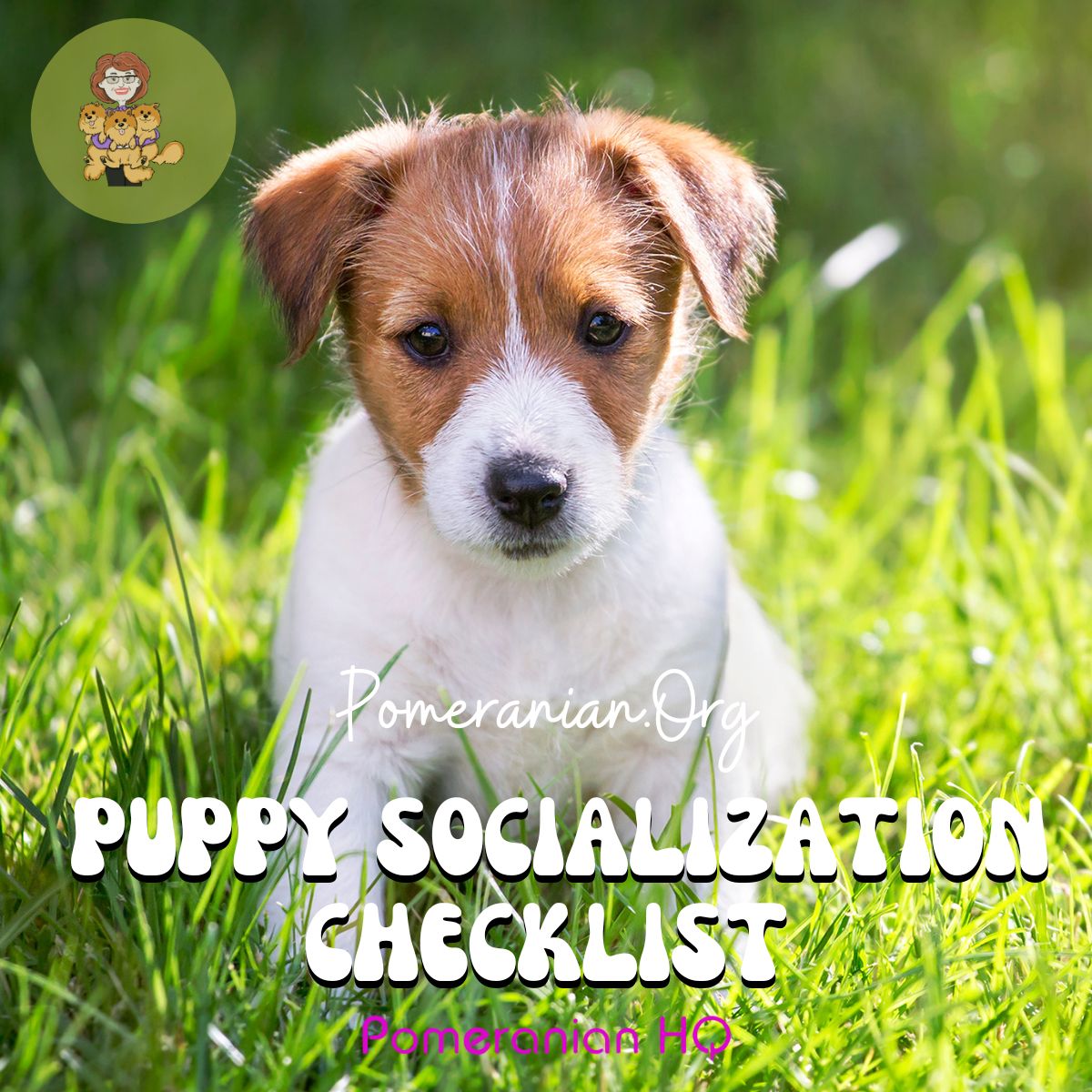
Training Methods and Tools
As a dog owner, I know how vital socialization training is for my puppy’s development into a balanced and well-behaved adult dog.
To socialize a puppy effectively, I use a combination of methods and tools that make the process fun and efficient. In this section, I will share some of the training techniques and materials that have proven efficient in my experience.
To begin with, I always make sure to expose my puppy to a variety of people, places, and situations. Socialization can involve taking short trips to different environments, such as parks pet-friendly cafes, or even inviting friends and family over to meet the new addition to the family.
During these outings, I also use training treats as a positive reinforcement, rewarding my puppy for remaining calm and well-behaved in unfamiliar settings.
In conjunction with these “real-world” experiences, I have found that enrolling my puppy in socialization or classes is extremely beneficial.
These classes are usually led by a certified dog trainer who can guide the best ways to handle various situations. Participating in these classes allows my puppy to interact with other dogs and people in a controlled environment.
Aside from classes, I also use interactive toys for engagement and mental stimulation. Socialization helps my puppy become more accustomed to various sounds, textures, and movements, an essential part of socialization.
Some examples of interactive toys include puzzle feeders, treat-dispensing toys, and toys that make noise when played with.
I always remember to be patient and consistent during the socialization process. I understand that every puppy has its unique pace and temperament, so adjusting the frequency and intensity of socialization efforts is crucial.
By staying committed to these training methods and tools, I can ensure that my puppy has the best chance of growing into a confident, well-adjusted adult dog.
Puppy Socialization and Vaccinations
Regarding socializing puppies, vaccinations are crucial in keeping them safe and healthy. I understand exposing my puppy to different people, places, sights and sounds early on is important. Still, there’s a balance to strike between socialization and ensuring their health isn’t compromised.
It’s recommended to begin socialization classes with my puppy as early as 7-to-8 weeks of age. To follow the guidelines, my puppy must receive at least one set of vaccines seven days before starting these classes.
However, I should be cautious about the environments I expose my puppies to before they are fully vaccinated. Puppies have a higher risk of contracting illnesses, so it’s essential to prioritize their safety.
The Veterinary Society suggests that early socialization is key during the first three months of life, but care should be taken to follow appropriate safety guidelines.
To manage this balance, I can start by inviting friends and family to my home for my puppy to interact with or take them on car rides to experience different environments without exposing them to potential hazards.
Once my puppy has had their initial vaccinations, I can gradually introduce them to more diverse experiences and interactions.
Vaccinations are essential to my puppy’s socialization process and overall health.
Following vaccination guidelines and being mindful of potential risks can help my puppy grow into a well-adjusted and healthy adult dog.
Choosing a Responsible Breeder
Finding a responsible breeder is crucial if you’re considering getting a puppy. It ensures your furry friend’s health, socialization, and adjustment to their new home.
There are several factors to consider when choosing a responsible breeder, and I’m happy to share them with you.
As a responsible breeder, our top priority is the health and well-being of our puppies and breeding dogs. Breeders should provide proper veterinary care, nutrition, and a clean environment for their animals.
To ensure the breed’s well-being, breeders must deeply understand its health concerns.
To ensure the health of their dogs and lower the risk of genetic diseases, they must perform necessary health screenings.
A responsible breeder values the importance of puppy socialization.
Breeders who showcase their dogs in the show ring before breeding are guaranteeing that their breeding dogs have exceptional temperaments.
According to the American Kennel Club, the socialization process should start before bringing your puppy home. This means the breeder should gently handle the puppies in the first weeks of their lives and expose them to various stimuli to kickstart their socialization journey.
Being open and transparent with potential buyers is vital as a responsible breeder. I believe in providing clear and comprehensive answers to any inquiries. Your concerns are important to me, and I am committed to addressing them fully.
They should be open to showing their breeding facility and allowing me to meet the puppy’s parents. This way, I can assess the living conditions of the animals and gather insights into the puppy’s potential temperament and behavior.
Another key factor I prioritize is the breeder’s commitment to finding suitable homes for their puppies. A responsible breeder will ask questions about my lifestyle, living conditions, and experience with dogs to ensure I’m ready for the commitment and that their puppy will thrive in my environment.
Additionally, they should provide me with guidance, advice, and follow-up support after I bring my puppy home.
Finding a responsible breeder is essential for the well-being of my future puppy and a successful long-term relationship.
By considering these factors, I am certain that my puppy will have the best start in life and that I will be fully prepared to provide a loving and supportive environment for them.
Planning Your Puppy’s Socialization Schedule
When planning my puppy’s socialization schedule, I include various activities to help them become well-rounded and comfortable in different situations.
Here are some important aspects I consider while planning the schedule:
To begin with, incorporating daily walks is essential. I take my puppy on short walks around the neighborhood, gradually increasing the distance and difficulty.
Daily walks help them become familiar with their surroundings and encounter different humans, animals, and environments.
Car rides are another important aspect of socializing puppies. I take my puppy for regular car rides, starting with shorter trips and gradually increasing the duration. Car rides help them overcome any anxiety or fear associated with traveling in a vehicle and be comfortable during car rides.
I also regularly take my puppy to a nearby dog park. Dog parks are great places for puppies to meet and interact with other dogs of various breeds, sizes, and temperaments.
While it’s important to supervise these interactions closely, it is a valuable learning experience for my puppy to practice their social skills, manners, and play behavior.
Organizing playdates for my puppy with other dogs owned by friends, family, or neighbors is another way I help in their socialization. Playdates allow them to interact and play with other dogs and help them become comfortable with different home environments and people.
Monitoring my puppy’s progress is important. I keep track of their reactions and behavior during socialization activities. I use a grading system where I assign grades to assess their comfort level in various situations. This allows me to identify areas where my puppy might need more exposure or support to build confidence.
By implementing these strategies in planning my puppy’s socialization schedule, I ensure they grow up to be well-adjusted, happy, and friendly dogs.
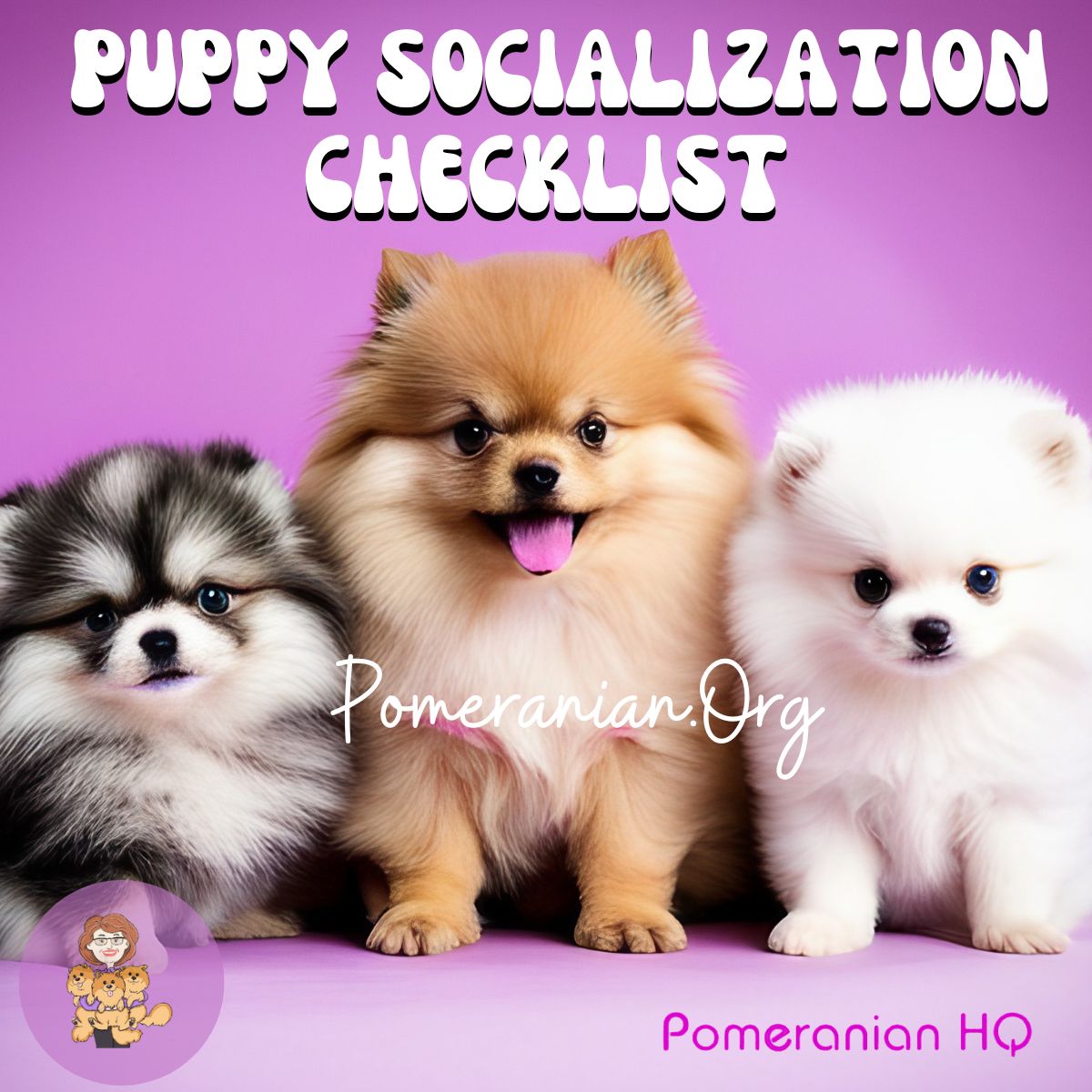
Frequently Asked Questions
What is the key age range for puppy socialization?
The key age range for puppy socialization is between 3 weeks and 14 weeks of age. This period is commonly referred to as the “socialization window.” Exposing puppies to various people, places, and experiences during this time is crucial to help them develop into well-adjusted, confident adult dogs.
What are essential experiences during puppy socialization?
During socialization, puppies need positive encounters with different people, environments, and other animals.
This includes meeting people of various ages, genders, ethnicities, and people wearing different accessories. Puppies should also experience multiple sights, sounds, and surfaces and play with other friendly dogs.
Taking your puppy on walks in different locations can help accomplish this goal.
When should puppy socialization classes begin?
Puppy socialization classes can begin as early as 9 to 10 weeks of age, as these groups can provide a structured and controlled environment for introducing puppies to different experiences.
Veterinarians recommend that puppies receive their first set of vaccinations and deworming treatment before starting class, so it is important to consult with your veterinarian beforehand.
What is the role of the Rule of 7 in puppy socialization?
The Rule of 7 is a guideline used in puppy socialization. It emphasizes that a puppy should have experienced at least seven different environments, surfaces, or stimuli when it is seven weeks old.
This ensures a well-rounded exposure to various experiences and helps create a well-adjusted adult dog. The Rule of 7 emphasizes the importance of early socialization and setting a strong foundation for a puppy’s behavioral development.
How can you effectively use a socialization checklist?
A socialization checklist can be invaluable for ensuring your puppy is exposed to various experiences during its critical socialization window.
Using the checklist to plan puppy outings, socialization classes, and interactions with different people and animals is best. Keep track of your puppy’s progress and adjust the checklist as needed to ensure a thorough and positive socialization experience.
How does socialization differ for service dogs?
Service dogs require more extensive socialization than pets, as they will encounter a wider range of environments, people, and situations in their work.
While the basic principles of socialization remain the same, service dogs should be exposed to more diverse and challenging experiences to ensure they will be comfortable and focused in their roles.
This can include training in busy public places, exposure to different forms of public transportation, and learning how to work around medical equipment, to name a few examples.
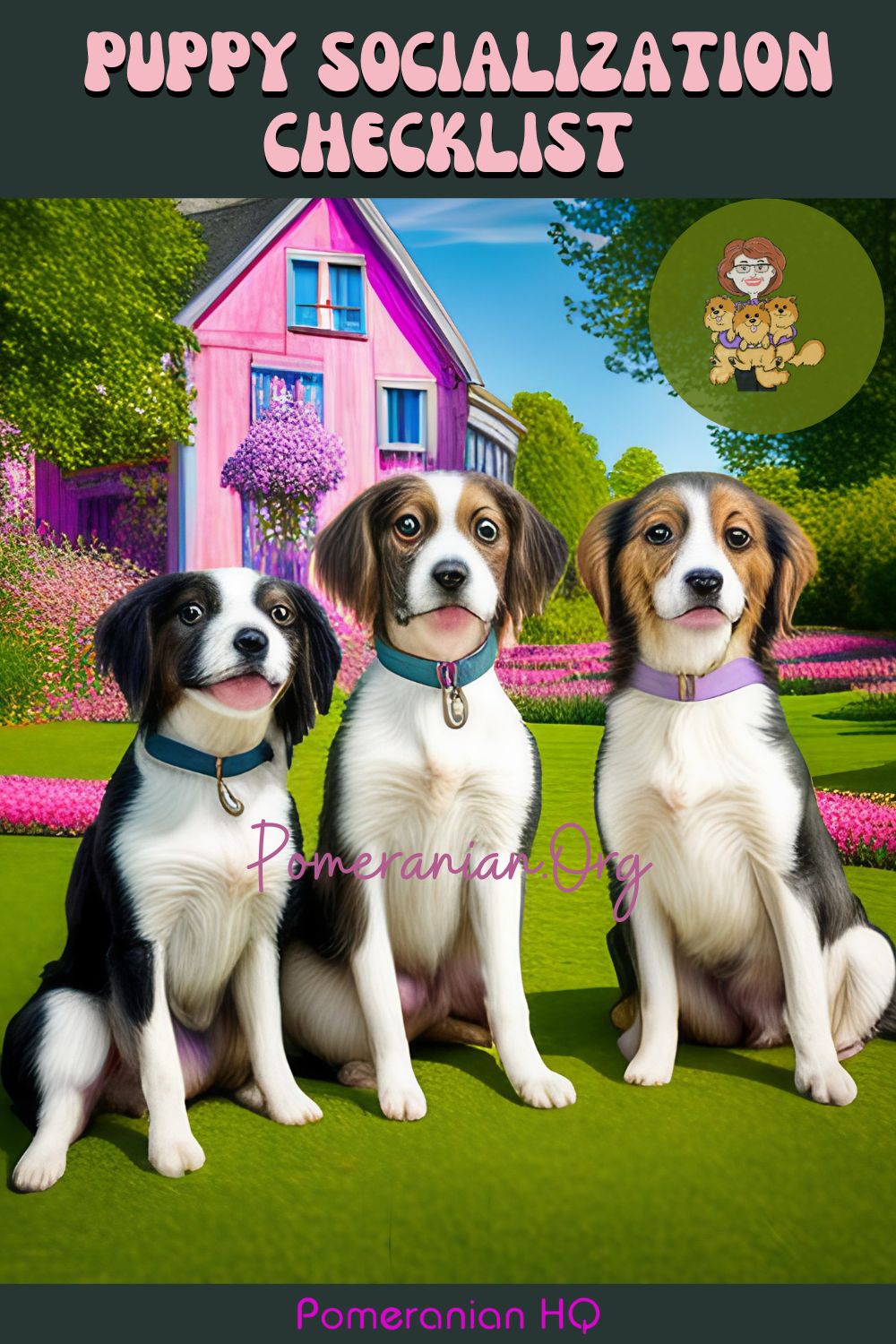
Puppy Socialization Conclusion
In my experience, a well-rounded puppy socialization checklist is essential for raising a confident and well-adjusted dog. Introducing puppies to various people, situations, and environments during their critical development period of 0 to 16 weeks can greatly enhance their ability to adapt and cope with new experiences as they grow older.
It’s important to expose my puppy to surfaces like grass, dirt, and various flooring materials, as well as other people, including kids and those wearing hats or sunglasses.
Taking my puppy on various walking routes helps them become familiar with their environment and can reduce fear or anxiety in unfamiliar settings.
In addition to exposure, I emphasize the importance of creating positive associations with these experiences. Positive associations can be made by offering treats, praise, or affection when my puppy interacts with something new or potentially scary.
By creating enjoyable experiences, my dog will grow emotionally balanced and adaptable to different situations.
A comprehensive puppy socialization checklist has greatly benefited me in raising well-adjusted dogs with positive behavioral traits. By investing time and effort into this crucial aspect of their development, I am setting them up for a lifetime of success as happy, well-behaved pets.
Copyright Pomeranian.Org. All Rights Reserved.
References and Further Reading:
[1] Official Standard of the Pomeranian (AKC). American Kennel Club, 2011.
[2] Official English Kennel Club Pomeranian Breed Standard, 2017.
[3] Kimbering Pomeranians “1891-1991”.
[4] Denise Leo, The Pomeranian Handbook.
[5] E.Parker, The Popular Pomeranian.
[6] L.Ives, Show Pomeranians.
Purchase the Pomeranian Handbook by Denise Leo
